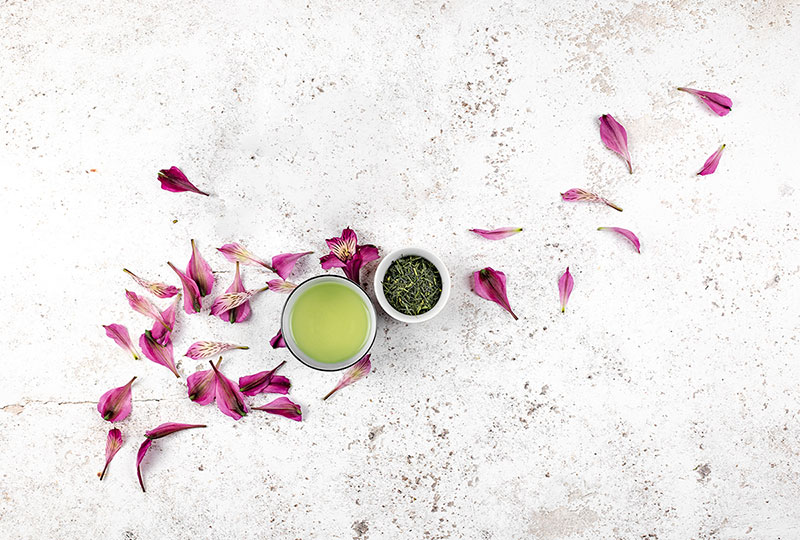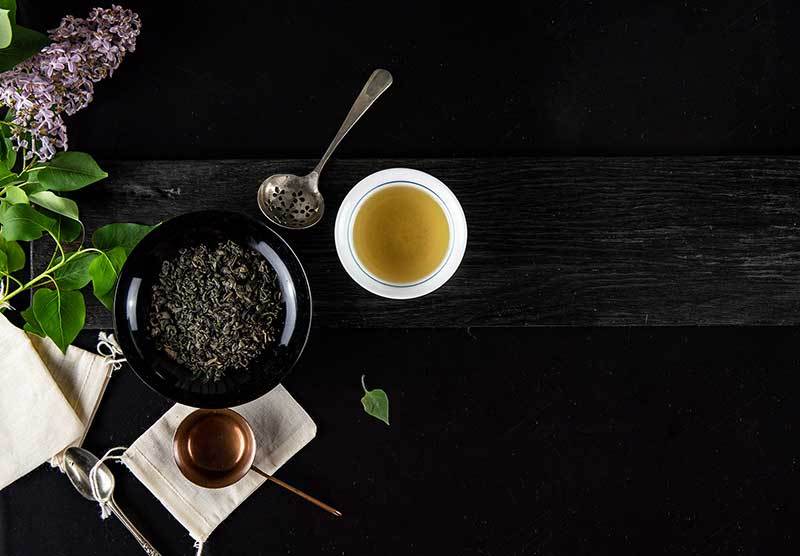Why do different green teas taste differently?
Green tea is one of the healthiest beverages in the world. Still, for a non-tea-drinker, becoming a green tea lover might look like an impossible mission. If you are new to green tea, it’s likely you will find your first green tea unpleasant to drink. In fact, bitterness, astringency, and strong musty and even muddy flavor might put you off from drinking it completely and give you an impression that all green teas are the same. This couldn’t be further from the truth.
A group of tea specialists created a sensory lexicon with 31 different flavor attributes for green tea:
- “Green: asparagus, beany, Brussels sprout, celery, parsley, spinach, green beans, and green herb-like
- Brown: ashy/sooty, brown spice, burnt/scorched, nutty, and tobacco
- fruity/floral: fruity, floral/perfumy, citrus, and fermented
- mouthfeel: astringent and tooth-etching
- basic tastes: overall sweet and bitter
- other attributes: almond, animalic, grain, musty/new leather, mint, seaweed, and straw-like”[1]
If there are so many flavors, why are there so many bad experiences? Read why do different green teas taste differently and how to get the best flavor from your tea leaves.
Chemistry behind the green tea flavor
The flavor of tea depends on hundreds of different compounds, usually divided into volatiles and non-volatiles. Volatile compounds are “a key attribute of sensory quality.”[2]They represent only “0.01% of the total dry weight of tea,”[3]but are very important for the final flavor and aroma. So far, scientists identified over 600 volatiles in green tea. They will depend on cultivar, terroir, and processing methods.
Non-volatile compounds such as amino-acids, caffeine, polyphenols, and sugar all contribute to flavor as well. Catechin EGCg is bitter and astringent, caffeine is bitter, and L-theanine, an amino acid responsible for a calming effect, has a savory flavor called umami[4]. Even though caffeine is bitter, most of the bitterness usually comes from EGCg, abundant in green tea.
Factors you cannot influence
Both volatiles and non-volatiles will depend on factors such as which cultivar is used for making green tea, an area where the tea plant is growing, harvesting time and processing methods. They depend on the producer, but are strongly influenced by nature.
1. Green tea cultivars
All green teas are made from a plant called Camellia sinensis, which has hundreds of different cultivars. Every country has its own special cultivars. For example, Japanese Sencha is mostly made from Yabukita cultivar and Chinese Long Jing from Longjing #43. Think of cultivars as grapes for making wine. Each will give a different flavor, color, and character.

Japanese sencha green tea
2. Terroir
Terroir is a word that describes soil, altitude and climate conditions. Soil with more minerals will give a mineral note to tea, as tea plant soaks them through roots. Teas that grow on high altitudes will have a cleaner and fresher flavor than those that grow on South American soil. If you are curious to experience the difference by yourself, we suggest comparing a Bitaco Green tea from Colombia with a delicate White Monkey organic green tea from China.
3. Special growing methods
Gyokuro is a variety of tea popular for a strong savory flavor. This flavor results from the shading process, where tea leaves accumulate more L-theanine and chlorophyll. Using different fertilizers like nitrogen will also influence the final flavor.
4. Harvesting time and technique
Harvesting time is “one of the most important factors influencing the chemical, physiological and physical qualities of tea, along with geographical difference and processing method.[5]” Spring harvests have a fresh and delicate flavor, while summer harvests are stronger. The ratio between buds, leaves, stems, and stalks will also only dictate the quality and flavor.
5. Processing method
Green teas are usually either steamed or pan-fired to stop the oxidation. This process preserves the color and nutrient content and makes a difference between green and black tea. The most popular steamed tea is Sencha. Chinese green teas are mostly pan-fired, with a few exceptions like Pinhead Gunpowder. Steamed teas have a fresh and vegetal aroma, while pan-fired are nutty and sweet.
Pinhead Gunpowder green tea
The size of processed tea leaf also plays an important role in the flavor. Small particles are easier to release flavor and will give a stronger and usually bitter tea. They are used mostly in tea bags because a very low quantity is needed to achieve a strong flavor.
Factors you can influence
How you brew and store your tea will have an influence on the flavor. Every good tea can be destroyed by bad brewing.
1. Storage conditions
Green tea usually keeps fresh for a year without changing the flavor and is good to use for at least two years[6]. Researchers discovered that volatile compounds in green tea change during storage,[7]meaning the flavor of the tea will change over time. To keep it as fresh as possible, always store green tea away from sunlight, moisture, heat and strong odors. A bag of green tea exposed to summer sun will change flavor within an hour.
2. Water quality
Good water is important for making tea. Different water types will extract different flavors and different nutrients. In fact, research showed that it’s possible to double the EGCg content in tea by brewing it with bottled or deionized water. If you don’t want to experiment with water types, the safest option is fresh spring water. Distilled and hard water are not appropriate for brewing tea.
3. Leaf to water ratio
Using more leaves and less water will cause a stronger more flavorful brew. However, using more leaves might increase the chances of bitterness. Use shorter steeping time to reduce bitterness and increase sweetness.
4. Brewing technique
Finally, the brewing technique will have a big impact on the flavor of green tea. Leaves brewed with boiling water and infused for over 2-3 minutes will release more nutrients, giving more flavor and bitterness. But, if you want to get the best flavor, brew green tea with 60 degrees Celsius for no longer than 3 minutes or 80 for only a minute[8]. Green tea leaves can be re-used 2-3 times, but the second infusion will always be weaker.
So, which green tea is the best for you?
Out of a few thousand green teas and 31 flavor attributes, there is the right green tea for everyone. Green tea doesn’t need to be bitter.
If you are looking for the highest health benefits and don’t mind some astringency and bitterness, go with stronger green teas like Gunpowder. For more help, check our guide onhow to choose tea with the most EGCG. For a fresher and sweeter flavor, choose spring harvest teas like Pre-Qingming Long Jing. Steamed green tea like sencha will have a vegetal note, while Chinese pan-fired tea such as Mao Feng is nuttier and sweeter. Teas with more buds like White Monkey have a delicate flavor with no bitterness and are a great choice for beginners.
Have a question which tea has the flavor attribute you are looking for? Send us an email and we will be happy to help you.
Disclaimer: This article is for informational purposes only. It’s not intended to replace medical advice, diagnosis or treatment. Every person is different and may react to different herbs and teas differently. Never use teas or herbs to treat serious medical conditions on your own. Always seek professional medical advice before choosing home remedies.





